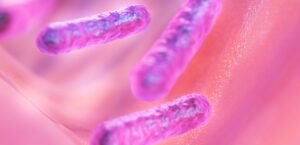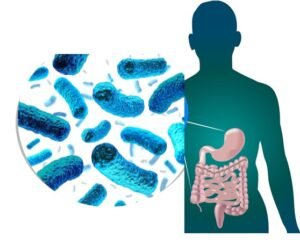Introduction
Humans are surrounded by trillions of microbes, with the microbiome being the total of genes found in various locations in an individual’s body. The relationship between the human host and microbiota is symbiotic, with the host providing space, suitable conditions, and food for the growth of the intestinal microbiota, which in turn participates in obtaining useful substances and causing resistance to infections. The relationship between the host and microbiota is mutually beneficial, with the host offering a place of growth and nourishment to the symbiotic intestinal bacteria, which in turn favors the host’s function by inducing resistance to infections and facilitating the absorption of digested food.

Importance of Gut Microbiota
The gut microbiota is of particular importance for maintaining human health, and various biological mechanisms are microbiota-dependent, useful for health homeostasis. Gut microbiota is divided into three main enterotypes: Bacteroides, Prevotella, and Ruminococcus. The gut microbiota protects the intestine from pathogens, contributes to a healthy immune system, regulates intestinal motility, and participates in metabolism. It stimulates the immune response against potential pathogens and suppresses it against food and symbiotic antigens.
Probiotics, live bacteria and yeasts, are beneficial for the digestive system, helping maintain gut health and are often referred to as “good” or “helpful” bacteria. The probiotic bacteria, found in dairy products and fermented foods, help strengthen immunity and gastrointestinal health, especially in conditions like irritable bowel syndrome.
Consuming probiotics can lead to numerous positive effects on the human body, including fighting intestinal and other diseases, aiding in infections, reducing serum cholesterol levels, stimulating the immune system, reducing allergy symptoms, aiding with lactose intolerance, and preventing hypercholesterolemia and osteoporosis.

KEY VARIABLES INFLUENCING THE INTESTINAL MICROBIOTA
1: Inheritance
The link between host genotype and gut bacteria is poorly known, as is the mechanism underlying host-bacteria interactions. However, evidence suggests that simple genetic mutations can alter gut microbiota composition. The importance of genetic background is demonstrated by the observation that the gut microbiota of monozygotic and dizygotic twins appeared more similar in the former than in the latter. In an animal model, similar gut microbiota in the same mouse strain was found to be greater than in mice of different species. The role of parental genetic influence on intestine colonization remains unclear.
2: Geographical location
The gut microbiota in children in rural areas is more diverse than in developed countries. A study in the US and Hong Kong found qualitative and quantitative differences in intestinal microbiota. In West Africa, children had a higher presence of Bacteroidota, Xylanibacter, Prevotella, and Bacillota, with a higher presence of short-chain fatty acids. The intestinal microbiota helps optimize energy intake from dietary fibers and protects against infections and inflammation.
3: Intrauterine period and delivery
The human gut microbiota begins before infant birth, with Bacillota phyla predominating in the meconium. After birth, the gut is colonized by various microbial strains, and everyone has their own gut microbiota that changes throughout their life. The baby’s birth is crucial as it affects the variety of microorganisms installed. Normal delivery involves receiving microorganisms from the mother’s vagina or intestinal tract, while caesarean section exposes newborns to hospital environment, causing disruption in gut microbiota for months to years.
4: Diet
The gut microbiota plays a crucial role in a person’s development and immune system. In the first months of life, changes in the gut microbiota are observed, with the stability and diversity of microbiota genes increasing after the first three years of life. Breastfeeding or consuming breastmilk substitutes in infancy has significant effects on the new-born’s gut microbiota and immune system development. In animal models, different feeding methods lead to different populations of microorganisms in the gut, affecting immunity up to the first five years of life. In humans, the intestinal microbiota influences the development of the immune system and metabolism, just as in adult life.
Adult dietary habits are important environmental factors shaping the growth of microorganisms in the human gut. Short or long-term consumption of animal or vegetable products changes the structure of the intestinal microbiota, with short-term diets increasing bacteria and long-term consumption of fruit and vegetables increasing Prevotella populations.

5: Lifestyle
Modern lifestyles, including sedentary lifestyle, obesity, and consumption of animal-based foods, can affect the intestinal microbiota. Studies show an increase in Bacillota and a decrease in Bacteroidota. Exercise and smoking can also affect the diversity of intestinal microorganisms, while stress can change gut motility and contribute to inflammatory bowel disease. These factors can impact the gut microbiota’s structure.
6: Use of antibiotics
Antibiotics, particularly broad-spectrum broad-spectrum antibiotics, negatively impact intestinal microbiota, reducing diversity and causing gradual re-emergence of strains.


